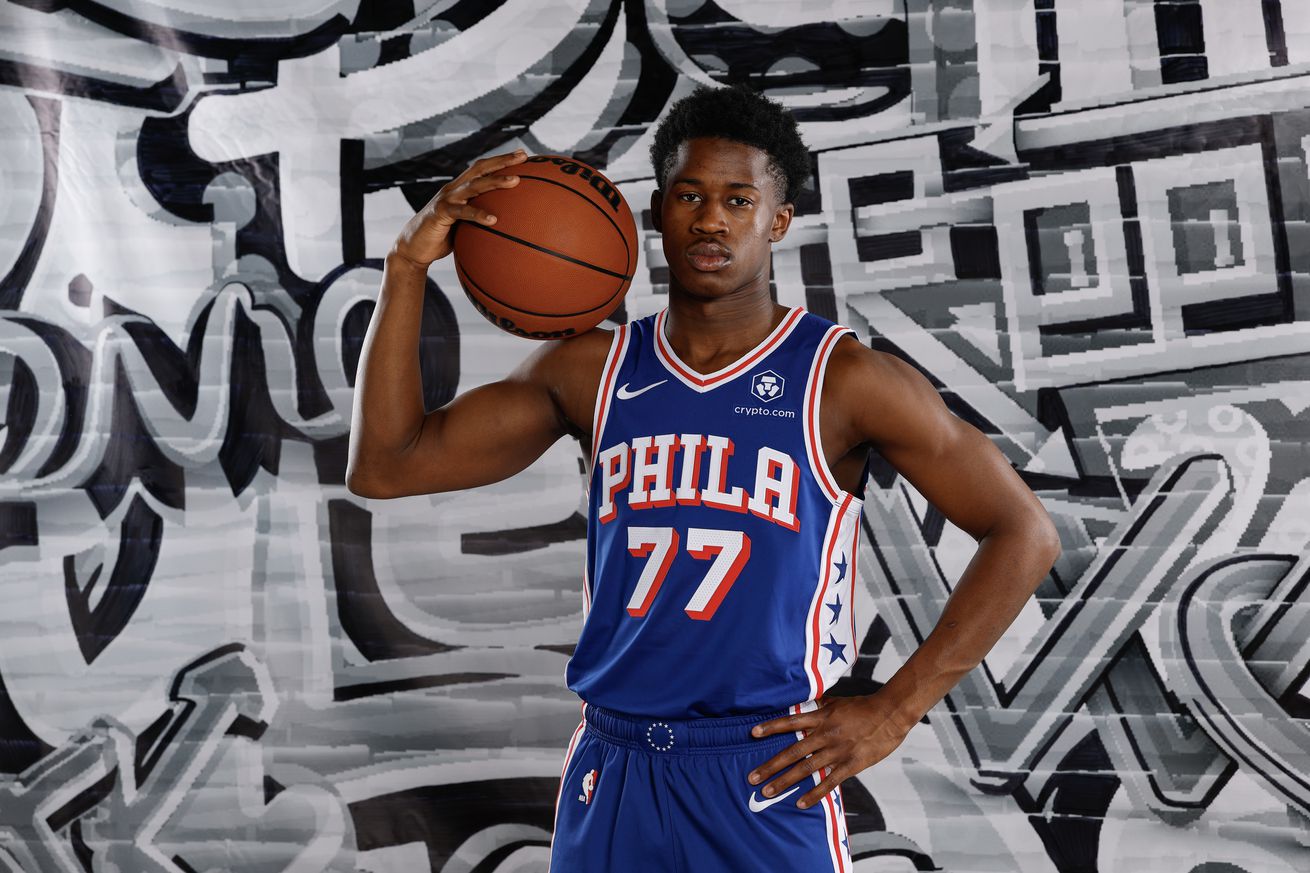
Maybe the perceived logjam in the Sixers’ backcourt isn’t that big of a deal. It wasn’t for some recent contenders.
In the three weeks since VJ Edgecombe became a Sixer, fans everywhere have surely kicked around conversations about how the minutes will get distributed in 2025-26 between the rookie, Tyrese Maxey, Jared McCain and Quentin Grimes should Grimes return. While it’s perhaps a bit problematic, it’s a good problem to have for a team that had nothing but bad problems last season, so that’s a step in the right direction.
However, if you’ve watched any of Edgecombe’s Summer League performances, you’ve probably noticed the superb athletic ability on display. It was something proponents of drafting Edgecombe knew he had all along so it’s not a surprise to everyone. Edgecombe is listed a 6-foot-5 but had 10 rebounds in the summer league opener against Utah. He’s certainly quick enough to move laterally and defend both shooting guards and small forwards on the perimeter. If he’s going to rebound at a high level at his height, then the Sixers “problems” in the backcourt, are even more minimal that you might have originally anticipated.
We decided to take a look at the four conference finalists from last season and examine their wing players for some proper context. After all, we’re supposed to be living in an era of positionless basketball anyway so why marry certain heights with their prototypical positions if you don’t have to?
Let’s start with the NBA Champion Oklahoma City Thunder. For obvious reasons, they ran everything through Shai Gilgeous-Alexander last season. Granted, SGA is a bit taller than most point guards, but Oklahoma City trotted out Lu Dort and Jalen Williams on the wings. Dort is listed at 6-4 and Williams is listed at 6-5. SGA is going to rebound better than most point guards but there still isn’t a more prototypical small forward for the Thunder standing at 6-6 or 6-7.
Now, how about the team Oklahoma City defeated in the NBA Finals? Andrew Nembhard and Tyrese Haliburton were the primary ball handlers for Indiana last season. Neither guy is taller than Edgecombe. Aaron Nesmith was Indiana’s small forward and while he does have an inch on Edgecombe, he profiles similarly in terms of his athleticism allowing him to more easily play the small forward spot.
Minnesota and New York, last season’s conference finals losers, both possess taller small forwards in Jaden McDaniels and OG Anunoby. However, the Sixers saw lots of Josh Hart as the small forward for the Knicks in the 2024 playoffs and Hart’s listed at 6-4. Mitchell Robinson also only has one more year on his current contract with New York so if the Knicks were to lose Robinson, it may prompt future front courts of Anunoby and Karl-Anthony Towns which would force Hart and the 6-6 Mikal Bridges to chew up the majority of the small forward minutes.
As you can see, this exercise is certainly imperfect and there are undoubtedly teams Philadelphia could run into that would create matchup problems if they tried to play lineups with three of Edgecombe, Maxey, Grimes and McCain on the court at the same time. But it also may not be that uncommon in an NBA that really is just requiring its wings to be athletic and have at least an average outside shooting ability. If you have those two things, or at least one of them, you can probably hang around in an NBA backcourt regardless of your height. We already know Maxey, Grimes and McCain are all adequate shooters. If Edgecombe develops a jump shot, he’s got star potential.
So, might it all come together for these four players in a way that allows everything to sort itself out and gives the Sixers neutral matchups at worst against opposing contending backcourts? It’s more likely than you might have thought.